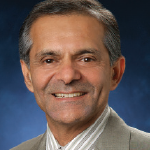The AMA House of Delegates (HOD) met in Chicago for its annual meeting June 9–14. More than 530 HOD members were present, with several hundred AMA and association staff and guests.
As I am sure you have noted from past issues of ACR@Work, the ACR is in its five-year membership review. The ACR must be represented in the AMA by at least 1,000 members to retain our seat on the HOD and participate in important AMA activities, such as the RUC and CPT Editorial Panel. Under the Rheumatology Strong! banner, we are reaching out to ACR members to renew their AMA membership or become members. As of the time of this report, we are within 100 members of making this threshold; we would like to significantly exceed it.
Important: I ask all ACR members to join/rejoin the AMA this week—if you have not already done so.
AMA Highlights
Andrew Gurman, MD, the outgoing president, highlighted the AMA’s advocacy efforts in multiple areas, such as ACA repeal and replacement. He talked about how the AMA is standing up for our patients and our profession. He also highlighted areas including a Coalition to Reform Prior Authorization and Utilization Management (of which the ACR is a founding member), the AMA Opioid Task Force, and the Medicare Quality Payment Program.
AMA Executive VP/CEO James Madara, MD, summarized progress during the fourth year of the five-year strategic plan for the AMA. To review, three key focus areas are:
- Improving health outcomes: The current focus is on improving outcomes in cardiovascular disease and type 2 diabetes. Efforts will be expanded to include a focus on the obesity epidemic.
- Accelerating change in medical education: In 2013, 11 schools received $1 million each in funding to implement projects to transform medical education. The second cohort of 20 schools was chosen in 2015, and each received $75,000 for a three-year project. The AMA also had a very public effort to sustain and/or increase funding for graduate medical education during the past year.
- Enhancing physician satisfaction and practice sustainability by shaping delivery and payment models: As a first step, the AMA collaborated with RAND Health, a respected national healthcare research firm, to identify the critical factors of success in care delivery and payment models that promote professional satisfaction and practice sustainability in different settings. This has led to the AMA STEPS Forward program with strategies, tools and resources to move forward.
Dr. Madara noted that each of these has been expanded. Three strategic arcs related to the above are to:
- Develop critical tools and policies for our field, such as the MACRA Action Kit and Payment Model Evaluator;
- Encourage lifelong professional development and physician growth; and
- Improve the health of the nation—specifically centering efforts on chronic diseases. The AMA is now working alongside additional partners like the Centers for Disease Control and American Hospital Association
The HOD passed a revised resolution regarding Maintenance of Certification (MOC). I testified on this issue following the assistance of the ACR’s MOC Task Force. This testimony was closely aligned with that of the representative of the Council on Medical Specialty Societies (CMSS). We moved forward strengthening AMA policy that states that MOC not be a requirement for medical staff membership and privileging, credentialing or re-credentialing, insurance panel participation, and state medical licensure.
